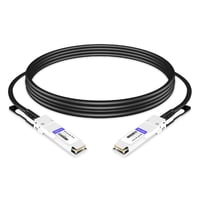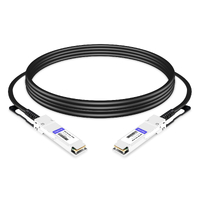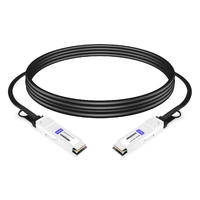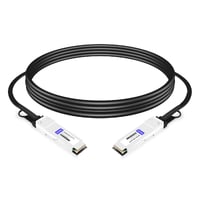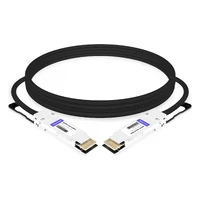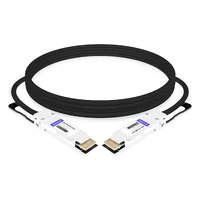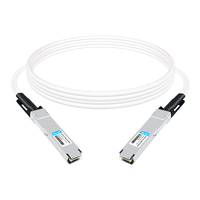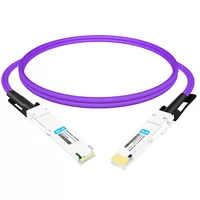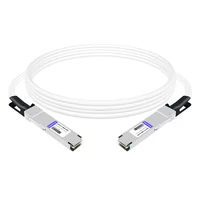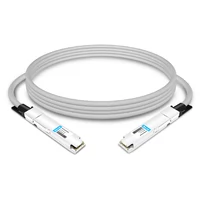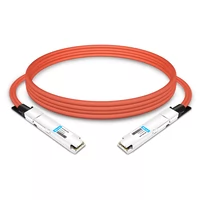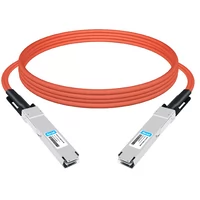Twinaxial cables, most commonly known as twinax cables, differ from typical coaxial cables because they have two instead of one center conductor. These wires are used for differential signaling over short distances at high speeds. Twinax cables have become popular in data centers and enterprise networks because they offer low latency and high bandwidth.
These cables work exceptionally well with LAN networks, server interconnections, and any other application requiring high-frequency data transfer. Compared to standard copper wires or other materials commonly used for making cords, twinaxial ones provide better performance and reliability in environments where speed is essential. Still, signal degradation must be kept at a minimum. There are two inner conductors within the cable, which are usually insulated from each other by some material like plastic or rubber before being wrapped up with shielding layers around them together so that no electromagnetic interference can occur between neighboring lines that may be laid next to each other due to their proximity.
Table of Contents
ToggleWhat is a Twinax cable?
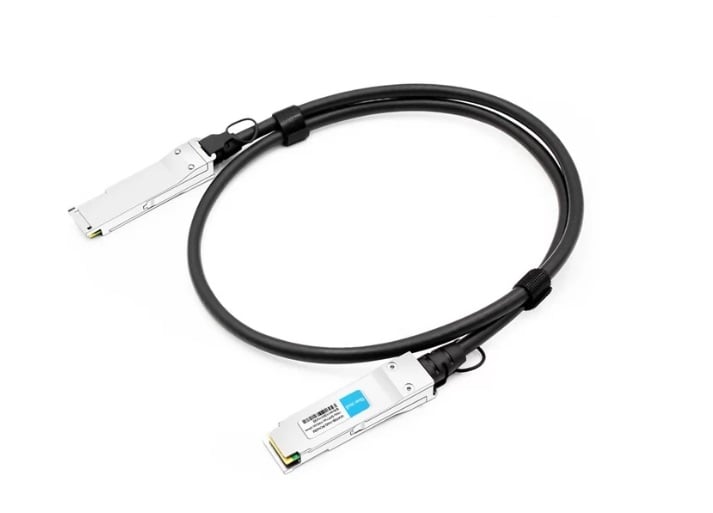
Overview of twinaxial technology
Twinaxial technology, or twinax for short, is a technology that uses two inner conductors to provide better differential signaling and lower latency. It differs from ordinary coaxial cables, which have only one conductor because paired conductors are used in twinaxial cables for carrying equal but opposite signals. This arrangement improves signal integrity by preventing electromagnetic interference (EMI) and crosstalk, making them more suitable for high-speed data transmission than any other cable type. Twinaxes are designed with extra layers of insulation and shielding, which adds to their strength and dependability, especially when they are subjected to harsh conditions like those found in enterprise networks and data centers.
Comparing Twinax cable with fiber optic cables
When comparing twinaxial (twinax) cables and fiber optic cables, a number of technical parameters must be considered as indicators of specific application suitability.
Data Transfer Speed:
- Twinax Cables: Generally, short distances of up to 7 meters enable speeds of up to 25 Gbps.
- Fiber Optic Cables: Over long distances, they can support data rates much higher than this, such as between 100 Gbps and several Tbps, without significant degradation.
Distance:
- Twinax Cables: They are designed for short-range communication, i.e., less than seven meters.
- Fiber Optic Cables: Single-mode fibers can transmit signals over hundreds of kilometers with the least loss, making them suitable for long-distance transmissions.
Signal Integrity and Latency:
- Twinax Cables: They are made from copper, giving them low latency; hence, they have fewer chances of degrading their signals over short ranges.
- Fiber Optic Cables: Long distances tend to introduce more noise into the signal, thus affecting its integrity; this is not so with Fiber optic cables since electromagnetic interference is minimal for them due to their latency and signal integrity properties, which come about because of low levels of EMIs across longer stretches.
Electromagnetic Interference (EMI):
- Twinax Cables: They are protected against EMI by multiple layers of shielding that surround them
- Fiber Optic Cables: Since it transmits data using light instead of electricity, fiber optics remains completely immune to all forms or types of EMI, making it ideal especially where there is high susceptibility to such interferences, either within an area or along certain routes.
Cost:
- Twinax Cables: For materials used and installation procedures carried out, twinax cables tend to be cheaper than fiber optics, primarily for short-distance applications.
- Fiber Optic Cables: When it comes to long-distance deployments, these cables may be more expensive than their counterparts because of the complexity involved in installing them and also because their nature requires costly materials like fibers, among others.
Application Use Case:
- Twinax Cables: Within data centers, twinaxial cables are often utilized for linking up very close or adjacent servers, such as those found in a rack, with switches and other equipment located within the same vicinity.
- Fiber Optic Cables: In situations where backbone networks need to be established, high-speed internet connections should be made available, or when there is demand for long-haul data transmission, fiber optic cable becomes the most preferred choice.
Therefore, it depends on whether one requires higher speeds over short distances (twinax) or lower speeds over long distances without much signal loss (fiber).
Types of Twinax connectors
Different applications require different types of Twinax connectors, each with features best suited for its particular use.
SFP+ (Small Form-factor Pluggable Plus) Connectors:
- SFP+ connectors are compact and hot-pluggable transceivers in telecom and datacom applications. They can operate at 10 Gbps, making them appropriate for high-speed interconnects within data centers.
QSFP+ (Quad Small Form-factor Pluggable Plus) Connectors:
- These connectors support higher data rates of up to 40 Gbps. This feature enables the aggregation of multiple 10 Gbps SFP+ links into one 40 Gbps link, thereby providing a cost-effective bandwidth increase without complex cabling.
CXP Connectors:
- CXP connectors target high-density and high-bandwidth applications where they can achieve data rates as high as 100 Gbps. Typically found in large-scale computing environments and data centers that need efficient, scalable networking solutions for success.
Each of these Twinax connectors has been optimized to deliver maximum performance, keeping in mind specific network environment requirements. To realize effective connectivity, it is important to select the appropriate Twinax connector based on the desired data rate, application type, and network architecture, among other factors.
How does a twinaxial cable work?

Understanding data transmission in twinaxial cable
Twinax cables (also called Twinaxial cables) work when two conductors are wrapped in a dielectric material and shielded by an outer conducting layer. This arrangement achieves differential signaling, where each conductor carries the same amount of charge but with opposite signs. Doing so prevents electromagnetic interference (EMI) and preserves signal integrity within short ranges. Moreover, twinaxial constructions enable fast transmission rates coupled with low latency, thus becoming useful for reliable communication in data centers or high-performance computing environments where stability matters most. These cables perform better than their alternatives because they have two wires, meaning they can consume less power while still providing robustness.
The role of conductors in Twinax cable
The conductors are essential in a Twinax cable. They serve to transmit electrical signals with as little distortion or loss as possible. Typically, these conductors are created using copper, the best material for this purpose; they help maintain the integrity of the signal and ensure that data gets transmitted without much weakening. Good-quality conductor design is necessary when it comes to achieving fast frequencies and dependable data rates –– such factors include conductor pair accuracy and copper purity, among others. Conductors should be appropriately designed if we want Twinax cables to withstand high-speed networking environments; this can be done by enabling differential signaling efficiency, which greatly reduces EMI (electromagnetic interference) and crosstalks.
What are the applications of Twinax cables?
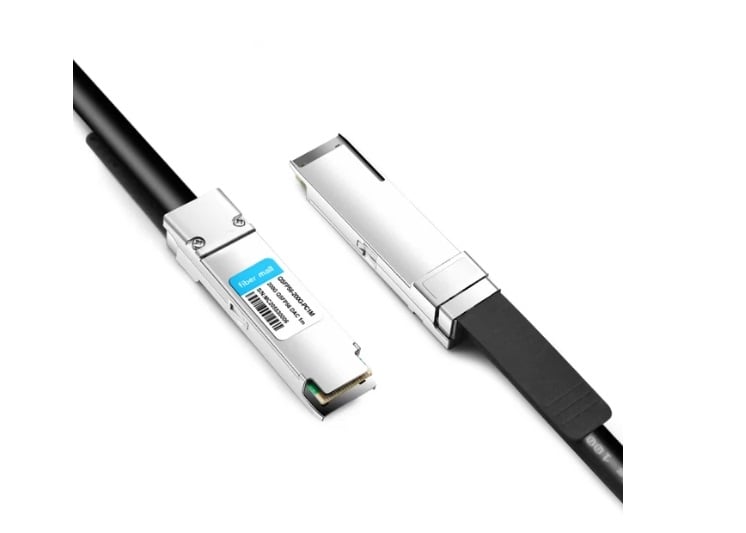
Using Twinax cable in Ethernet connections
The twinaxial cable, often used for Ethernet connections, has several benefits over traditional ethernet cables, especially in high-speed networking environments. Top sources say they are mainly deployed in data centers where network equipment such as switches and servers must be connected because it can support high-speed data transfer with low latency. Twinax cables are mainly used for short distances up to 7m because they have better signal integrity than more extended copper or fiber optic options while consuming less power at the same time. These wires are necessary for 10GBASE-CX4, 40GBASE-CR4, and 100GBASE-CR10 Ethernet standards for efficient and reliable network performance in modern-day data communication infrastructure. They are designed strong enough to perform well at higher frequencies, thus enabling increased information exchange rates (making them less susceptible to electromagnetic interference) and guaranteeing stable connections in densely populated network setups where space is limited (thanks to reduced EMI).
Deploying Twinax cable assembly in data centers
Deploying Twinax cable assemblies in data centers is essential to maximize efficiency and reliability in fast networking systems. These are preferred because they have low latency and consume less power; hence, they are perfect for linking storage systems, servers, and high-performance computing clusters, among others. They also support high-frequency data rates with strong shields against electromagnetic interference (EMI) and crosstalk, ensuring steady transmission of information. Twin axles work best when applied for top-of-rack (ToR) or end-of-row (EoR) network configurations where dealing with many closely spaced connections at higher speeds may be required. Moreover, their flexibility in design and ease of installation simplifies cabling infrastructure within the data center, leading to improved airflow and cooling management within server racks.
What are the advantages of Twinax cable?
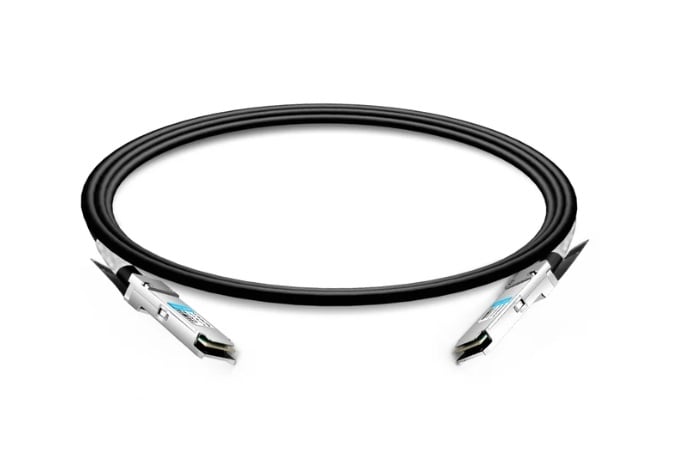
Cost-effective solutions with Twinax cables
Twinax cables can solve modern networking environments cost-effectively. First, they are much cheaper than optic fibers yet still transmit data at high speeds—for instance, between servers and switches within data centers where the distance is short. Second, in terms of energy consumption, using this type of cable instead of optical transceivers leads to lower operational costs, promoting power usage efficiency. In addition, their durability reduces maintenance needs, thus prolonging their lifespan and eventually lowering total expenses over time. Taken together with other savings such as these, it becomes clear that twinx cables offer many economical options for high-performance data centers.
High-speed and reliable twinax transmission
Twinax cables are the best at sending fast and accurate information. This is why they are perfect for data centers requiring high performance and as little delay as possible. They can support data rates up to 40 gigabits per second or even 100 gigabits per second over short distances, thus ensuring that devices communicate quickly and efficiently. Twinax cables have been built with strength in mind so as to reduce signal loss, which leads to poor connections between devices; also, twinaxes do not suffer much from electromagnetic interference (EMI); hence, this makes them more reliable than any other cable type out there. Apart from these, they have low crosstalk levels, improving their transmission quality, especially when used in noisy environments where many other wires are being used simultaneously. All these features together make twinaxial cable ideal for places where people need reliable high-speed internet connectivity most!
Comparing twinaxial cable with coaxial cable
When it comes to twinaxial cable versus coaxial cable, there are a few key things to note. First, twinax cables are used for high-speed data transmission over short distances like those found in data centers, with up to 100 Gbps rates. Coaxial cables, on the other hand, are better suited for longer-distance applications such as cable internet or television transmissions where lower data rates are typical. Twinax cables also have excellent resistance against electromagnetic interference (EMI) and crosstalk, which helps improve the stability and reliability of the connection. While coaxial cables do shield against EMI, they generally suffer from higher signal loss and attenuation over long distances than twinax cables do. Moreover, twinax cables require less maintenance and can last longer, thus making them more cost-effective for environments requiring high performance without much latency over time.
What should you consider when choosing a twinaxial cable?
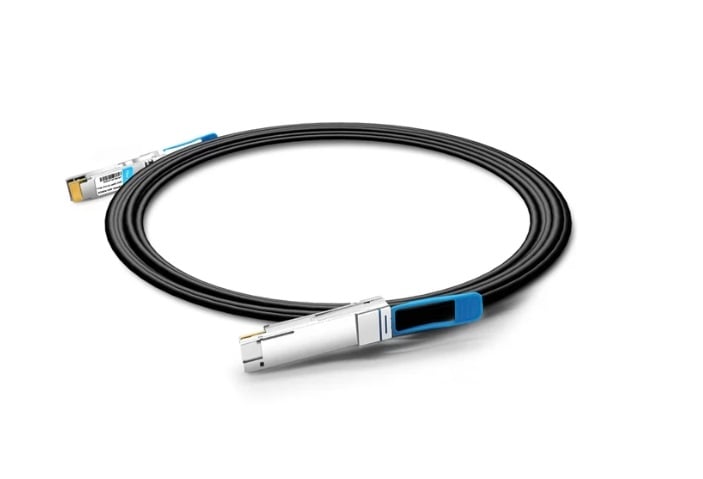
Compatibility factors with Cisco and other devices requiringthatrequiring
When you are choosing a twinaxial cable for Cisco and other devices, there are some main compatibility considerations that you should take into account:
- Type of Connector: The twinax cable must be fitted with proper connectors (for instance, SFP+, QSFP+) that work well with your Cisco devices or any other networking equipment.
- Rate of Data Flow: Ensure the cable supports the required data rates needed by your application, such as 10 Gbps, 40Gbps, or even higher, to match device capabilities.
- Length of the Cable: Take note of the maximum length supported by this type without compromising its performance since it mainly connects short distances within data centers.
- Shielding and EMI Resistance: Choose cables having strong shields against Electromagnetic Interference (EMI) – these are necessary for good signal integrity maintenance in densely populated electronic environments where reliable transmission of data is crucial.
- Certification and Standards Compliance: Choose cables that meet industry standards and are certified for use with Cisco equipment, as this guarantees better performance and compatibility levels.
These factors together make sure that any twinaxial cable selected will provide fast connectivity without fail while also working perfectly well with other networks alongside Cisco.
Selecting the suitable Twinax cable for rack integration
To ensure the best performance and compatibility when selecting a twinax cable for rack integration, you should consider the following points:
- Bandwidth Requirement: Work out how much bandwidth your rack setup needs. This is usually done by assessing what data throughput each connected device will require; therefore, it may mean that high-grade twinax cables are necessary where there are applications running on very large amounts of data.
- Durability and Flexibility: Go for those types of twinax cables that can withstand being bent around corners repeatedly over extended periods without breaking. Most racks have limited space, so cords must be routed through them very tightly so that they do not get mixed up with other wires or even damaged by heavy equipment.
- Thermal and Environmental Factors: Consider the heat levels within your rack environment, then choose cable models suitable for use in such conditions. Twinaxial varieties, which dissipate more heat than others, can still maintain good performance and last longer.
- Connector Integrity: The connectors used with these cables need to be of high quality so that they make firm connections that will not easily get disconnected within the same setup.
- Cost Efficiency: Consider how much money one would need to spend against the quality level one desires from a given product (cable). It should always be remembered that while expensive items tend to offer better services, there has to be some balance between cost-effectiveness and the features required.
If you review these factors, it will help you choose the appropriate double axial cable for integration into your racks, thus enabling the effective functioning of various components within the data center infrastructure.
Evaluating copper vs. fiber optic options
When you’re trying to decide whether copper or fiber optic cables are best for your data center, there are a few things you need to think about:
- Bandwidth and Speed: Fiber optic cables have much higher bandwidths and can transmit data far faster than copper ones. That means they’re perfect if your enterprise has lots of users with high-speed access needs or if you want to make sure that your infrastructure won’t become outdated too quickly.
- Distance: Signals sent over fiber optic cables degrade less over long distances than those sent over copper wiring do. On the other hand, because signal attenuation is more pronounced in non-optical connections such as these, they’re generally used only for relatively short runs within buildings or between adjacent telecommunications closets.
- Interference and Security: Unlike copper-based wires, which can be affected by electromagnetic interference (EMI) from sources like fluorescent lights or radio transmitters, optical fibers don’t conduct electricity at all – so they’re immune from this kind of problem. However, shielded twisted pair (STP) or even unshielded twisted pair (UTP) cabling should work fine in most environments where EMI isn’t an issue.
- Cost: Copper-fiber hybrid patch cords are cheaper than pure fiber versions but offer some of the benefits. In general, though, installing and maintaining copper wires is less expensive because it’s been done for years across many industries already; however, long-term savings on performance improvements may eventually outweigh these initial costs
- Durability and Size: Because fiber optics are made of glass or plastic rather than metal like traditional ethernet cables, they are much lighter weight overall. This makes them easier to handle during installation and also means that more strands can fit into a given space inside a patch panel box.
Evaluating each of these areas will give you an idea about what type(s) might work best in your particular situation – but remember, there isn’t necessarily one “right” answer. Ultimately, though, this exercise should help ensure that whatever decision gets made is based on fact rather than opinion or emotion and also helps reduce the risk of having to replace everything later on down the line just because something was overlooked now!
Frequently Asked Questions (FAQs)
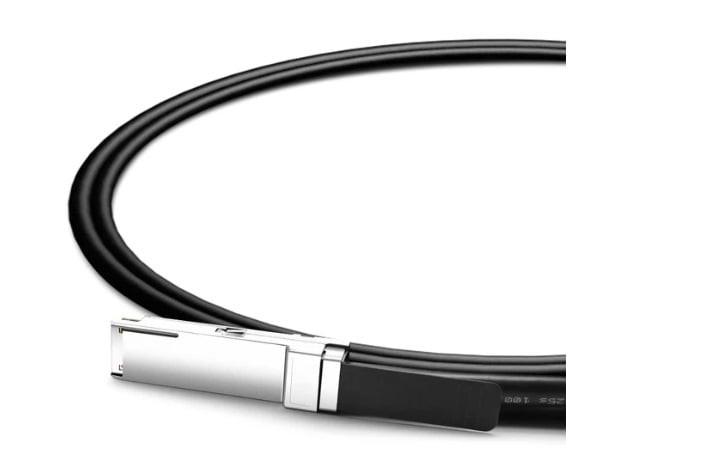
Q: What’s meant by twinaxial cable?
A: Twinaxial cables, commonly known as Twinax cables, are electrical cables with two central conductors usually used for high-speed data transmission.
Q: Where are twinaxial cables mainly applied?
A: Twinaxial cables are mainly used in data centers, storage area networks, and server-to-server, switch-to-switch, or switch-to-storage device connections at higher speeds; they support interfaces like 10G SFP, QSFP+, 10G B Ethernet
Q: What is a direct attach copper (DAC) cable?
A: A direct attach copper (DAC) cable is a type of copper twin axial cable used for connecting networking hardware such as servers and switches directly without requiring separate transceivers.
Q: What’s different in passive and active DAC twin ax cables?
A: Passive direct attach copper cables do not have any electrical components to amplify the signal, so they can only be used over short distances, while active DAC twin ax cables contain signal-boosting components that allow them to be run over longer lengths.
Q: Is DAC Twin ax Cable Compatible with Cisco Hardware?
For instance, Cisco SFP-H10GB-CU2M is a directly attached copper twin-ax cable that works well with Cisco equipment.
Q: What speeds can be supported by copper twinax cables?
A: Depending on the type of cable and transceivers used, copper twinax cables can support different speeds, such as 10G, 40G, or even 100Gbps.
Q: Why are copper Twinax cables better than optical cables?
A: Copper twinax cables are generally cheaper, easier to install, and have low latency. They are also excellent for data centers located over short distances.
Q: Are there any length limitations for DAC cables?
A: Yes, passive DAC cables usually have a restricted length of up to 7 meters, while active DACs can go up to 15 meters depending on the manufacturer and specification.
Q: Can I quickly put a DAC twinax cable in place?
A: Yes, they can be installed easily since they don’t require separate transceivers and are often used for plug-and-play connectivity in network hardware.
Q: What is the impact of Copper Twinax Shielding on performance?
A copper Twinax shield helps reduce electromagnetic interference (EMI), thus ensuring high signal integrity and better overall performance, especially in high-density data centers.
Related Products:
-
 QSFP28-100G-PC1M 1m (3ft) 100G QSFP28 to QSFP28 Copper Direct Attach Cable
$25.00
QSFP28-100G-PC1M 1m (3ft) 100G QSFP28 to QSFP28 Copper Direct Attach Cable
$25.00
-
 QSFP28-100G-PC3M 3m (10ft) 100G QSFP28 to QSFP28 Copper Direct Attach Cable
$43.00
QSFP28-100G-PC3M 3m (10ft) 100G QSFP28 to QSFP28 Copper Direct Attach Cable
$43.00
-
 QSFP56-200G-PC1M 1m (3ft) 200G QSFP56 to QSFP56 PAM4 Passive Direct Attach Copper Twinax Cable
$50.00
QSFP56-200G-PC1M 1m (3ft) 200G QSFP56 to QSFP56 PAM4 Passive Direct Attach Copper Twinax Cable
$50.00
-
 QSFP56-200G-PC3M 3m (10ft) 200G QSFP56 to QSFP56 PAM4 Passive Direct Attach Copper Twinax Cable
$80.00
QSFP56-200G-PC3M 3m (10ft) 200G QSFP56 to QSFP56 PAM4 Passive Direct Attach Copper Twinax Cable
$80.00
-
 QSFPDD-400G-PC50CM 0.5m (1.6ft) 400G QSFP-DD to QSFP-DD PAM4 Passive Direct Attach Copper Twinax Cable
$70.00
QSFPDD-400G-PC50CM 0.5m (1.6ft) 400G QSFP-DD to QSFP-DD PAM4 Passive Direct Attach Copper Twinax Cable
$70.00
-
 QSFP-DD-400G-AC3M 3m (10ft) 400G QSFP-DD to QSFP-DD PAM4 Active Direct Attach Copper Twinax Cable
$350.00
QSFP-DD-400G-AC3M 3m (10ft) 400G QSFP-DD to QSFP-DD PAM4 Active Direct Attach Copper Twinax Cable
$350.00
-
 OSFP-FLT-400G-PC50CM 0.5m (1.6ft) 400G NDR OSFP to OSFP PAM4 Passive Direct Attached Cable, Flat top on one end and Flat top on other
$110.00
OSFP-FLT-400G-PC50CM 0.5m (1.6ft) 400G NDR OSFP to OSFP PAM4 Passive Direct Attached Cable, Flat top on one end and Flat top on other
$110.00
-
 QDD-OSFP-FLT-AEC50CM 0.5m (1.6ft) 400G QSFP-DD to OSFP Flat Top PAM4 Active Electrical Copper Cable
$1200.00
QDD-OSFP-FLT-AEC50CM 0.5m (1.6ft) 400G QSFP-DD to OSFP Flat Top PAM4 Active Electrical Copper Cable
$1200.00
-
 OSFP-FLT-800G-PC2M 2m (7ft) 2x400G OSFP to 2x400G OSFP PAM4 InfiniBand NDR Passive Direct Attached Cable, Flat top on one end and Flat top on the other
$300.00
OSFP-FLT-800G-PC2M 2m (7ft) 2x400G OSFP to 2x400G OSFP PAM4 InfiniBand NDR Passive Direct Attached Cable, Flat top on one end and Flat top on the other
$300.00
-
 OSFP-800G-PC50CM 0.5m (1.6ft) 800G Twin-port 2x400G OSFP to 2x400G OSFP InfiniBand NDR Passive Direct Attach Copper Cable
$105.00
OSFP-800G-PC50CM 0.5m (1.6ft) 800G Twin-port 2x400G OSFP to 2x400G OSFP InfiniBand NDR Passive Direct Attach Copper Cable
$105.00
-
 OSFP-800G-AC3M 3m (10ft) 800G Twin-port 2x400G OSFP to 2x400G OSFP InfiniBand NDR Active Copper Cable
$600.00
OSFP-800G-AC3M 3m (10ft) 800G Twin-port 2x400G OSFP to 2x400G OSFP InfiniBand NDR Active Copper Cable
$600.00
-
 OSFP-FLT-800G-AC3M 3m (10ft) 800G Twin-port 2x400G OSFP to 2x400G OSFP InfiniBand NDR Active Copper Cable, Flat top on one end and Flat top on the other
$600.00
OSFP-FLT-800G-AC3M 3m (10ft) 800G Twin-port 2x400G OSFP to 2x400G OSFP InfiniBand NDR Active Copper Cable, Flat top on one end and Flat top on the other
$600.00

